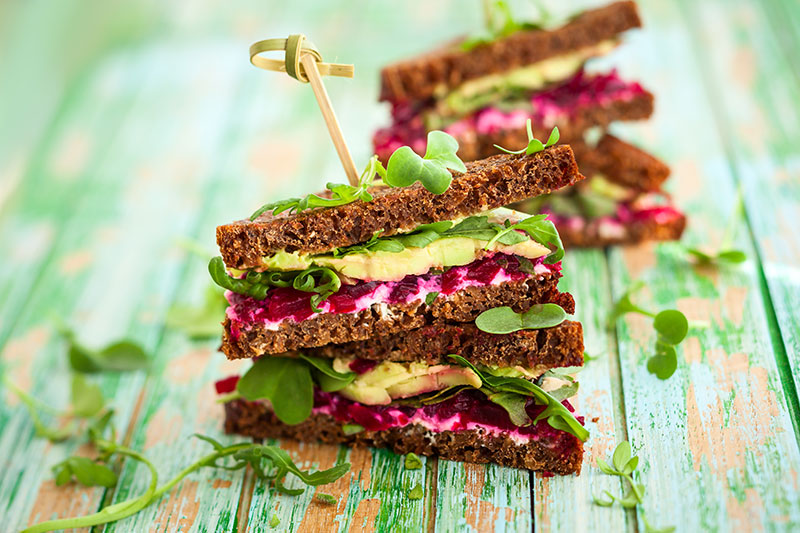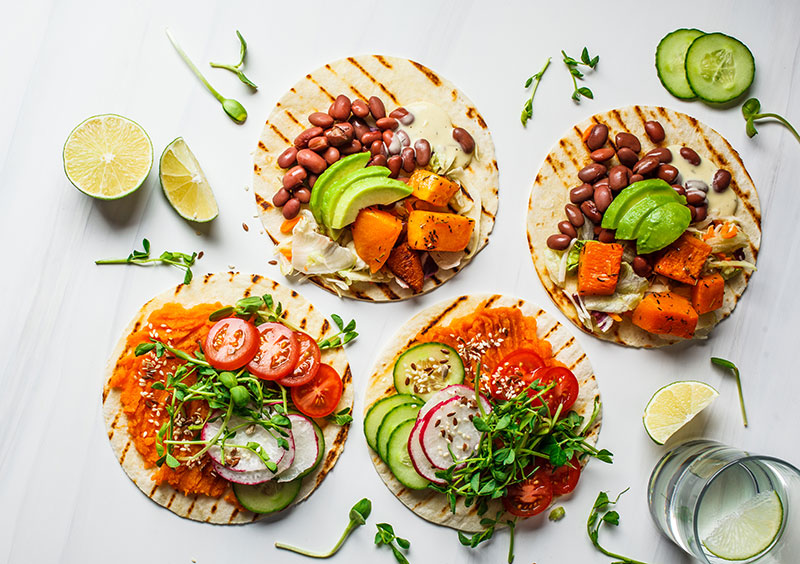Facts, Fun and Creativity of the Plant-Based Diet
By Tracy Williams, Tracy's Plate
Learning about nutrition is fun for everyone. Everyone has their own opinions on healthy lifestyles and food, and the subject can be confusing and complicated. Plant-based meal plans can be nutritious if you consume whole foods that are more often minimally processed.

Expert Advice on Nutrition
According to the Centers for Disease Control and Prevention, only 1 in 10 consume the recommended fruits and veggies daily. The US Department of Agriculture's MyPlate program recommends making half your plate fruits and veggies. The American Heart Association (AHA) recommends four to five servings of fruits and veggies daily.
A whole food plant-based diet can help ensure that individuals, whether they have disabilities or not, consume the recommended amounts of fruits and vegetables. The National Institutes of Health says a plant-based diet consists of all minimally processed fruits, veggies, whole grains, legumes, nuts, seeds, herbs and spices. Sometimes, some plant-based eaters enjoy eggs and dairy products to get more protein.
Plant-based Proteins Can Promote Wound Healing and More
People with disabilities deserve access to healthy foods despite being on a strict food budget. Whole foods should be the priority for overall health, strength and adaptive independence. Dr. John "Wesley" McWhorter, DrPH, MS, RDN, RDN, LD, CSCS, spokesperson of the Academy of Nutrition and Dietetics, loves recommending that his clients who want to switch to a plant-based diet focus on consuming a diet rich in beans, nuts, seeds and quinoa as well as tofu for various protein sources.

Protein is excellent for reducing appetite and hunger and maintaining weight. Protein is also outstanding for wound healing such as pressure sores for wheelchair users. Protein benefits muscle mass and strength and may slow down muscle atrophy in people with disabilities. Protein consumption increases a person's metabolism to help people with disabilities who have mobility issues to help manage their weight. According to the Dietary Reference Intake report for macronutrients, a sedentary man should eat about 56 grams of protein daily, and the average woman should eat about 46 grams of protein.
Prioritizing Fiber Can Help Disability Community with Bowel Health
According to the Academy of Nutrition and Dietetics, fiber is an essential nutrient and higher fiber consumption can be beneficial for people with disabilities for overall health. However, many Americans may need to catch up to the recommended daily amounts in their diets. Women should aim for about 25 grams of fiber daily. Men should target 38 grams, or 14 grams for every 1,000 calories.
Dr. McWhorter advocates for a plant-based diet, which includes all the fiber needed for all Americans, especially for a community that may struggle with constipation and bowel health. Dr. McWhorter promotes that dietary fiber comes from fruits, veggies, nuts, seeds, legumes and whole grains when you prioritize the plant-based diet. Many people in the disability community may benefit from a diverse and happy gut microbiome. Fiber will keep people fuller longer. Fiber consumption is also associated with a decreased risk of heart disease, decreased cholesterol levels and better blood sugar control.
Healthy Plant-based Fats Can Impact Brain Injury and Secondary Conditions
Most people from the disability community further their health by learning about sources of healthy fats and their health benefits. Dr. McWhorter encourages clients to consume nuts, seeds, avocados and healthy oils like olive and canola oil to access healthy fats easily accessible on a strict food budget. Fish and seafood are the only healthy fat food group removed from a plant-based diet.
Healthy fats improve brain health, especially if an individual has experienced a brain injury or memory loss. Secondary condition risk, muscle spasticity and overall body inflammation may be reduced when people with disabilities eat more nutritious fats. When fighting against chronic fatigue, more healthy fats may help limit energy dips. If you follow a 2,000-calorie diet, a target range may be 44 to 78 grams of fat daily.
Food Pantries Can Be a Healthy Alternative
Many people with disabilities live below the poverty line. Many registered dietitians are getting better at accommodating their messaging for people who need to access food from local food pantries.
Some dietitians encourage their clients to do food shopping with friends while splitting expenses, especially if they are neighbors in low-income housing apartments. Mealtime can be an experience to catch up on what is happening in each other's lives. Community and friendship are everything.
The priority is to cook meals for each other based on what each other has in stock. The goal is to know that you may want to focus on eating out less so you spend less money for convenience. Another goal might be to find and keep an electronic file of your favorite healthy recipes, like soups, stews and casseroles, that can be used multiple times a week.
Dr. McWhorter instructs his clients that pantries are doing better in offering healthier and more nutritious options, like boxed whole grain or chickpea pasta, frozen or canned fruits and veggies, and canned beans. He reminds clients and consumers that canned foods are a good nutritious substitute for fresh or frozen when you live on a strict food budget. He advocates that low-income consumers, disabled or not, may need to access a food pantry and become less fixated on the plant-based diet plan label.
Healthy Convenience Foods are Available, but Choose Carefully
The disability community relies on convenience foods if individuals have limited hand function, poor balance, or struggle with chronic fatigue. Many companies provide pre-made plant-based options that come either fresh or frozen. Plant-based pizza, meat substitutes, pasta dishes, and other meals are available in local grocery stores. Consuming more veggies for lunch and dinner is a suburb start.
Hummus, guacamole, or salsa can be unique dips. You can consider thinking differently about meat by having smaller portions or substituting tofu instead. Slowly adding vegetarian meals to your food choices and menus is fantastic. Build these meals around a base of beans, veggies, whole grains and quinoa. Dr. McWhorter encourages members of the disability community to use more dried herbs and spices for unique flavoring instead of salt. People with limited hand function may need knife skills for chopping herbs.
It is better to make it a goal to increase the consumption of whole foods rather than focusing on what to remove altogether. Convenience foods are great for people with disabilities who still lack adaptive cooking skills, so it is better to use convenience foods rather than not eating at all. Fat, sugar and salt are usually added when consuming processed foods, and essential nutrients, such as fiber, are more often removed. Too much saturated fat, added sugar or sodium can increase your risk of developing a chronic disease, but sometimes processed foods cannot be avoided.
About the Author:
Tracy Williams has a degree in Nutrition and Dietetics from Dominican University. She is a food advocate, disability advocate and mental health advocate. She has moderate cerebral palsy and other chronic conditions and will be speaking at the upcoming Abilities Expo Chicago in June. Connect with her on www.tracysplate.com.
Pre-Register for Abilities Expo Today...It's Free!
